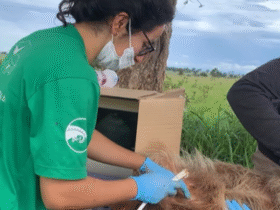Sustainable consumption helped to maintain the economy in the development of Europe and Central Asia last year, but the toxic combination of external demand, constant inflation and structural weaknesses, now threatens to push the region into a low -growth trap.
According to the World Economic Update of the World Bank published on Wednesday, regional growth is expected to slow down on an average of 2.5% in 2025 and 2026.
If we exclude Russia, the forecast modestly improves to 3.3%, still significantly lower than 4%, registered from 2010 to 2019.
From post-standard recovery to a fragile base
After resistance to global shocks with 3.6% stabilized growth rates in 2024 – to a large extent due to the stability of consumption, increase money transfers and increase real wages – developing economies of the European region and Central Asia (ECA) are now faced with a much darker horizon.
Most of the regional slowdown is the result of the merger of adverse factors in the world and the national level. The weakening of commercial flows with the European Union, the constant uncertainty in world politics and the general slowdown in the main markets exert strong pressure on the open economy with limited shock absorbers.
“Global uncertainty, geo -economic fragmentation and weak expansion between large business partners make it difficult to support this growth,” said Antonella Bassani, vice -president of the CEA World Bank.
What countries are they slowing down and why?
The World Bank data show that Central Asia, the CEA subregion with faster growth, is not safe.
It is expected that its growth will decrease from strong levels from 2024 to 4.7% by 2025-26, dragging on by reducing the expansion of the oil sector in Kazakhstan, which falls export and reduce the shipment flows.
Russia is faced with a strong slowdown, with a predicted growth of only 1.3% – almost three times slower than in 2024. The introduction of more stringent sanctions, the increase in the costs of loans and a decrease in energy prices are aggravating structural restrictions that threaten further preventing their economy from the previous path to the pandemic.
It is expected that Türkiye, which takes place of the delicate process of economic renewal, will record an expansion by 3.3%, which is a wonderful improvement compared to the last years, but continues not to correspond to its long -term average.
The prospects of Poland remain a little more optimistic, with a predictable growth of 3.1%due to investments supported by the European Union, although until 2020 it is still lower than its average, from the fragility of the euro zone and constant risks from the point of view of commercial policy.
In the Western Balkans and the South Caucasus, growth should be moderate up to 3.4%and 3.5%,
Inflationary pressure changes the monetary policy
The price pressure is returned. Inflation in the CEA region increased to 5% per year in February 2025, compared with 3.6% in the middle of -2024. Defining factors? Prices for food and services, restrictive work markets and high demand from consumers. This forced several central banks to suspend the reduction in fees or even turn the course, complicating any support for cash growth to support growth.
The World Bank warns that inflation can remain tough, fed by internal risks, such as expansionist fiscal policy and a loan growth.
Violations on the proposal side – from the volatility of raw materials to blows associated with climate – can additionally strengthen this dynamics.
Why reforms are more important than when
In addition to cyclic problems, the report devotes a significant role to the structural reforms necessary for re -launching long -term growth.
“To achieve a stronger long -term economic expansion, it is important that the countries of the region accelerate internal structural reforms that contribute to the dynamic and innovative private sector, entrepreneurship and technology,” said Bassani.
The central topic is the critical role of business -innovations, the performance and dynamism of young companies.
“Innovations and experiments in companies are important for increasing productivity and prerequisites for achieving and maintaining a high level of efficiency,” said Ivailo, the main economist of the World Bank in Europe and Central Asia.
The bank claims that more attention should be paid to innovative companies in the initial phase than the widest sector of small and medium -sized enterprises (SMEs).
These companies generate employment and have growth potential, but face a difficult environment with insufficiently developed capital markets and limited access to long -term financing.
The lack of competition also suffers progress. Public companies continue to dominate many sectors, with the exception of more flexible private companies.
The World Bank indicates that political persons who make decisions should devote the priority for the elimination of barriers to enter, increase the costs of research and development in the field of R&D and the integration of global technologies, allowing companies to move from simple production centers into foreign supplies.
Arrested in the average trap of profitability?
Without urgent reforms, the risk is stagnant. The World Bank warns that countries that do not modernize their economic personnel do not expand their tax base and do not invest in human capital, and may have difficulty maintaining modest growth.
For many, the budget space is reduced, limiting the marine of maneuvering for incentives, since the needs for public expenses increase.
In order to avoid stagnation and approach the status of a country of high performance, the region must give priority for business -innovations, competitive markets and reforms that increase productivity. Without these reforms, the promise of convergence with the most advanced economy risks increasingly inaccessible.












Leave a Reply